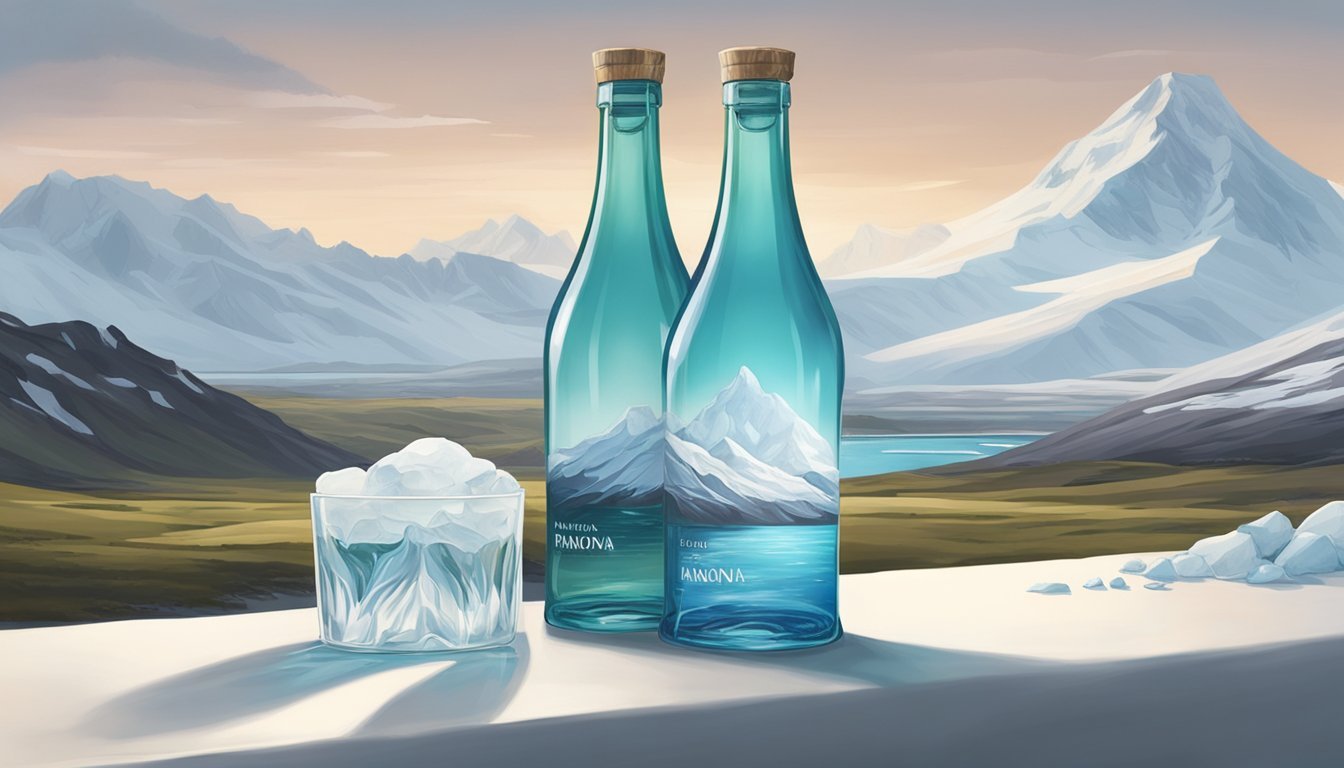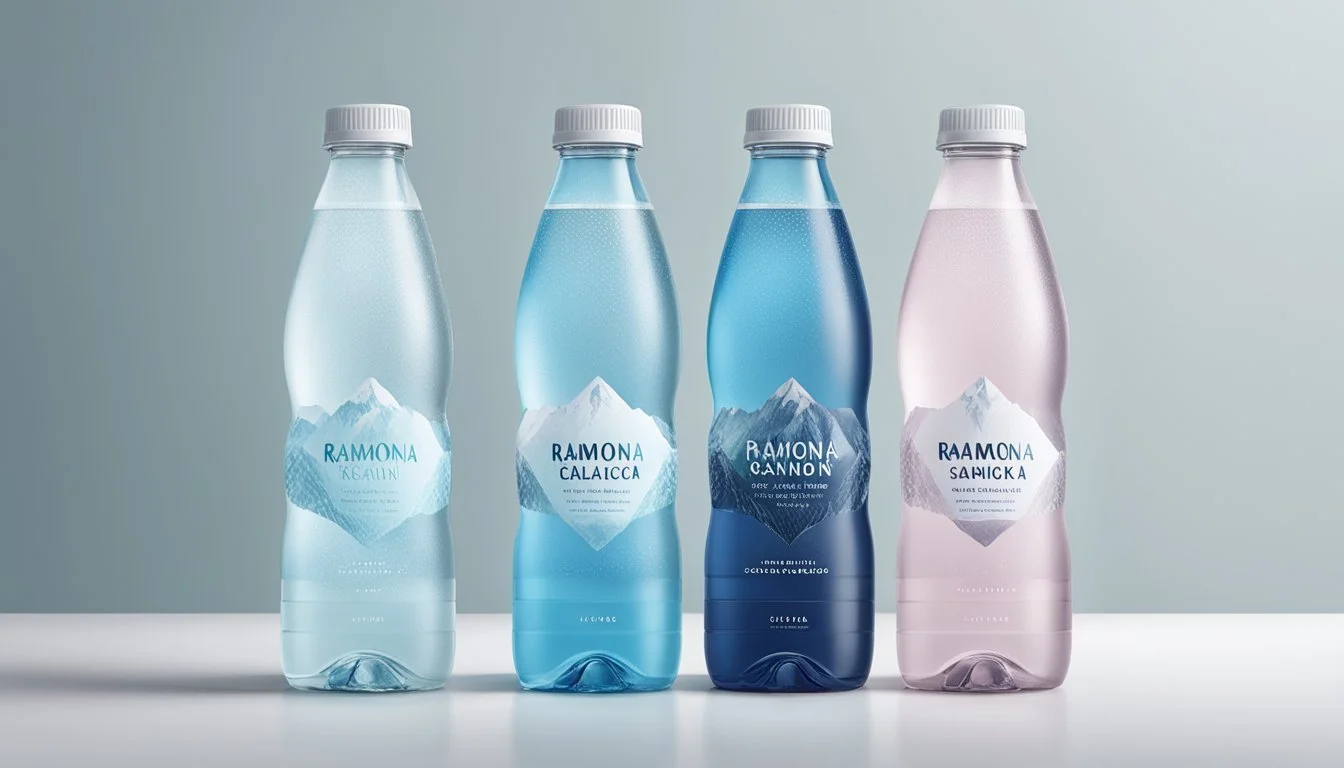Icelandic Glacial vs. Ramona
Which Bottled Water Is Better?
When it comes to choosing bottled water, two brands often stand out: Icelandic Glacial and Ramona. Consumers looking for purity and balanced mineral content might find Icelandic Glacial an appealing option. Touted for its clean taste, Icelandic Glacial is sourced from the pristine Ölfus Spring in Iceland, which is naturally filtered through layers of lava rock.
Ramona, on the other hand, brings a unique flair to the bottled water market. Known for its creative branding and distinct taste, Ramona often appeals to those seeking a refreshing and stylish hydration option. Despite its compelling branding, discerning consumers may notice subtle differences in taste and mineral content when compared to Icelandic Glacial.
In the debate of Icelandic Glacial vs. Ramona, taste preference and brand loyalty play significant roles. Those prioritizing purity and a crisp taste might lean towards Icelandic Glacial, while others might be drawn to the unique experience offered by Ramona. The choice ultimately depends on what the consumer values most in their bottled water.
Understanding Bottled Water
Bottled water comes in various types, catering to different consumer preferences. The following sections explore the historical development, varieties, and the global landscape of bottled water brands.
History and Overview of Bottled Water
The practice of bottling water dates back to ancient civilizations. Romans and Egyptians were among the first to appreciate springs for their healing properties.
By the 17th century, European merchants began bottling and selling spring water for health benefits. The industrial era brought mass production, popularizing bottled water as a convenient alternative to tap water.
Technological advancements have since improved purification processes, making bottled water safer and more accessible. Today, bottled water is a multi-billion dollar industry.
Types of Bottled Water
Bottled water comes in several forms, each with unique characteristics:
Natural Spring Water: Sourced from underground springs, often rich in minerals.
Purified Water: Treated through distillation, reverse osmosis, or deionization, removing impurities and contaminants.
Mineral Water: Contains naturally occurring minerals, bottled at the source.
Alkaline Water: Has a higher pH level, purported to neutralize acid in the body.
Electrolyte-Enhanced Water: Added electrolytes like sodium, potassium, and magnesium for better hydration.
Sparkling Water: Carbonated for a fizzy texture.
Still Water: Non-carbonated, plain water.
These types offer varied mineral content, taste, and potential health benefits.
Global Water Brands Landscape
The bottled water market is dominated by several key brands, each with unique selling points:
Evian: Natural spring water from the French Alps.
Fiji: Artesian water known for its soft, smooth taste.
Nestlé Pure Life: Widely available, offering both purified and mineral waters.
Smartwater: Purified with added electrolytes for enhanced taste.
Icelandic Glacial: Renowned for its purity, sourced from Iceland's Ölfus Spring.
Brands like Ice Mountain, Acqua Panna, and San Pellegrino also contribute to the diverse market.
Each brand competes on factors like source purity, mineral content, and environmental impact, offering consumers a range of options.
Brand Profiles
A closer look at Icelandic Glacial and Ramona reveals unique origins and philosophies that distinguish them in the bottled water market. Each brand brings distinct qualities to the table, shaping their market positioning and consumer appeal.
Icelandic Glacial: Origin and Distinction
Icelandic Glacial sources its water from the Ölfus Spring in Iceland, one of the world's largest and most pristine springs. This source is naturally replenished by rainfall and melting glaciers, ensuring a consistent supply of pure water.
The water goes through minimal processing as it is already naturally filtered through layers of lava rock. This gives it a clean, crisp taste that appeals to many consumers.
Key Points:
Source: Ölfus Spring, Iceland
Purity: Naturally filtered through lava rock
Taste: Clean and crisp
Sustainability: The Ölfus Spring is self-replenishing, ensuring sustainability
Packaging: Bottles made from recycled materials
Ramona: Brand Philosophy and Market Position
Ramona is a bottled water brand that emphasizes sustainability and social responsibility. Unlike Icelandic Glacial, which focuses on the purity of its water source, Ramona centers its philosophy on ethical practices and environmental impact.
The company actively participates in global water sustainability initiatives and prioritizes eco-friendly packaging solutions. Its marketing approach appeals to consumers who are conscious about environmental and social issues.
Key Points:
Focus: Sustainability and social responsibility
Initiatives: Active participation in global sustainability projects
Packaging: Eco-friendly materials
Consumer Appeal: Targets environmentally and socially conscious consumers
Market Position: Competitively positioned as an ethical water brand
By examining these profiles, it becomes evident how each brand leverages its unique attributes to attract different consumer bases.
Comparative Analysis
A detailed comparison between Icelandic Glacial and Ramona bottled waters reveals differences in pH levels, taste, mineral content, and environmental impacts of their packaging. Each aspect affects their popularity and potential benefits.
pH Levels and Alkalinity
Icelandic Glacial boasts a naturally high pH level of 8.4, making it slightly alkaline. This alkalinity can help neutralize acid in the body and promote hydration.
Ramona, in contrast, has a neutral pH, typically around 7, which makes it neither acidic nor alkaline. Both waters are suitable for daily consumption but offer varying benefits based on their pH levels. While some consumers prefer alkaline water for potential health benefits, others may opt for neutral pH due to its versatility.
Taste and Palate Experience
Icelandic Glacial is renowned for its crisp, clean taste with a hint of smoothness, attributed to its glacial source. The water is often described as refreshing and easy to drink.
Ramona offers a distinct taste characterized by its unique mineral profile. It may present a slightly metallic or mineral-rich flavor, appealing to those who appreciate a robust and complex palate. Consumer preference often divides based on these taste profiles with some preferring the crispness of Icelandic Glacial while others favor the mineral complexity of Ramona.
Mineral Content Comparison
Icelandic Glacial contains a balanced mix of minerals, including calcium, magnesium, and potassium, which contribute to its clean taste and potential health benefits. Its mineral composition is relatively low, ensuring a smooth, subtle flavor.
Ramona, on the other hand, varies depending on its sourcing regions, but it usually has a higher mineral content. This includes magnesium, calcium, and sometimes iron, which can enhance the taste but may also result in a more distinct mineral flavor. The differing mineral contents cater to varying consumer needs and preferences.
Packaging and Environmental Impact
Icelandic Glacial utilizes PET bottles that are BPA-free and fully recyclable. This choice of packaging aligns with environmental safety standards, though concerns about plastic pollution and carbon footprint persist.
Ramona often uses glass bottles, which are highly recyclable and have a significantly lower carbon footprint compared to plastic. Glass is perceived as more environmentally friendly and reduces the risk of microplastic contamination. Both brands highlight their sustainability efforts, but Ramona’s use of glass may appeal more to eco-conscious consumers.
In summary, Icelandic Glacial and Ramona differ across several critical factors, making each suitable for different consumer preferences and needs.
Health and Hydration
Understanding the health benefits and hydration properties of Icelandic Glacial and Ramona bottled waters is essential for making an informed choice. The focus here will be on hydration and consumer health benefits, as well as the importance of electrolytes and minerals.
Hydration and Consumer Health Benefits
Icelandic Glacial water is known for its exceptional purity and beneficial mineral content. Touted as offering effective hydration, it helps maintain fluid balance in the body, which is crucial for overall health.
Ramona bottled water, meanwhile, aims to provide hydration with a similar emphasis on purity. It champions clean source water as pivotal to its health advantages, promoting continuous hydration.
Both brands aim to address consumer needs for high-quality hydration, making them solid choices for those prioritizing health.
The Importance of Electrolytes and Minerals
Icelandic Glacial water stands out with its high alkaline level, boasting a pH of 8.4. This higher pH is associated with potential health benefits, including better hydration. Minerals like calcium (5.7 mg/L) and magnesium (2.2 mg/L) are present in the water, contributing to electrolyte balance.
Ramona water, similarly, includes essential minerals aimed at promoting good health. Attention is paid to sourcing and natural filtration, ensuring the water maintains its electrolyte content and beneficial mineral profile.
Monitoring the pH levels and mineral content can be crucial, especially for individuals with health concerns requiring careful electrolyte management. Whether for daily hydration or specific health needs, both options offer clear advantages that cater to a health-conscious audience.
Sourcing and Purity
Icelandic Glacial Water and Ramona Water pride themselves on their pristine sources and rigorous purification methods. Understanding the origin and filtration processes behind each brand sheds light on their quality and the benefits they offer.
The Significance of Water Sources
Icelandic Glacial Water is sourced from the Ölfus Spring in Iceland, a natural spring formed over 5,000 years ago. This spring is replenished by rain and snowmelt infiltrating volcanic rock, ensuring a continual supply of fresh water. The Ölfus Spring is remarkable for its untouched environment, providing water that is naturally filtered and mineral-rich.
In contrast, Ramona Water sources its water from various natural springs across the United States. These springs also offer naturally high-quality water but do not share the unique geological features of the Ölfus Spring. Ramona’s sourcing locations are selected for their purity and consistent water quality.
Filtration Process and Purity Standards
Icelandic Glacial Water employs a hands-off approach, letting nature do the work. The water from the Ölfus Spring passes through layers of volcanic rock before collection. This natural filtration removes impurities while retaining essential minerals like calcium, magnesium, and potassium. This method, combined with minimal human intervention, ensures high purity and a well-balanced mineral content.
Ramona Water undergoes a more controlled filtration process. Sourced from multiple springs, the water is subjected to rigorous testing and advanced purification techniques like reverse osmosis and UV treatment. These processes ensure that contaminants are removed, and the water meets stringent purity standards.
Both brands emphasize purity but through different methods—natural filtration for Icelandic Glacial and advanced technological processes for Ramona. This difference leads to varying mineral compositions and taste profiles unique to their sources and filtration methods.
Consumer and Environmental Considerations
When comparing Icelandic Glacial and Ramona bottled water, it’s essential to examine their packaging materials, environmental sustainability, and company initiatives to understand which offers superior benefits to consumers and the planet.
Packaging Materials and Environmental Sustainability
Icelandic Glacial utilizes 100% recycled plastic (rPET) for their bottles, a choice that reduces waste and reliance on virgin plastics. They also offer glass bottle options, which are more easily recyclable and have a lower carbon footprint compared to plastic.
Ramona, on the other hand, packages their water primarily in non-recycled plastic bottles, which contributes to higher levels of waste and environmental degradation. Unlike Icelandic Glacial, Ramona does not currently offer a glass bottle alternative, limiting consumer choices for more environmentally friendly packaging.
Environmental sustainability in packaging is a growing concern among consumers. Icelandic Glacial's use of recycled materials and glass bottles positions it as a leader in this area, emphasizing their commitment to reducing environmental impact. Ramona's reliance on traditional plastic packaging may not meet the expectations of environmentally conscious consumers.
Environmental Certifications and Company Initiatives
Icelandic Glacial boasts multiple environmental certifications, including being certified CarbonNeutral. This certification indicates that they offset their carbon emissions through various projects to ensure their operations do not contribute to climate change. Additionally, they engage in numerous sustainability initiatives like using geothermal energy for bottling processes.
Ramona has not been reported to hold any specific environmental certifications, which may raise concerns about their commitment to reducing their environmental impact. The lack of transparent sustainability initiatives further differentiates Ramona from Icelandic Glacial.
For consumers keen on supporting environmentally friendly practices, Icelandic Glacial's strides in achieving a neutral carbon footprint and their proactive approach to sustainability offer significant advantages. Ramona's limited involvement in environmental initiatives may make it less appealing to this demographic, underscoring the importance of corporate responsibility toward environmental preservation.
Practical Insights for Consumers
Consumers looking to choose between Icelandic Glacial and Ramona bottled water should consider quality reports, total dissolved solids (TDS), and cost versus quality.
Deciphering Quality Reports and TDS Information
Quality reports provide essential data on the purity and mineral content of bottled water. Icelandic Glacial is known for its high purity, sourced from the Olfusa spring in Iceland, filtered through volcanic rock. This process naturally filters out impurities, ensuring clean, refreshing water.
Ramona sources its water differently, impacting its TDS levels, which measure the concentration of dissolved substances. Icelandic Glacial water typically has lower TDS due to its unique filtration method, making it appealing to those seeking mineral-balanced hydration.
Key Points:
Source: Icelandic Glacial from Olfusa spring; Ramona's source varies.
Filtration: Icelandic uses volcanic rock filtration.
TDS Levels: Often lower in Icelandic due to natural filtration.
Evaluating Price vs. Quality
When evaluating price versus quality, consumers must weigh the benefits of purity and mineral content against cost. Icelandic Glacial is often priced higher due to its superior source and filtration process.
Ramona offers a more budget-friendly alternative but may have variable purity and TDS levels. For some consumers, the consistent quality of Icelandic Glacial justifies the higher price, while others may find Ramona adequate for everyday hydration needs.
Considerations:
Higher Cost: Icelandic Glacial for premium quality.
Budget-Friendly: Ramona as an economical choice.
Value: Determined by individual priorities on purity and mineral content.
Conclusion and Recommendations
When comparing Icelandic Glacial and Ramona, both offer distinct advantages for consumers.
Water Taste: Icelandic Glacial, sourced from the Olfusa Spring in Iceland, boasts purity with a smooth, crisp taste due to natural filtration through volcanic rock. Ramona, capturing a different essence, may have unique taste characteristics but lacks the pristine sourcing of Icelandic Glacial.
Hydration: Both brands effectively hydrate, adhering to FDA regulations for quality and safety. Icelandic Glacial, enriched with minerals like calcium, magnesium, and potassium, may provide added benefits.
Type of Water: Icelandic Glacial is natural spring water, emphasizing its untainted origin. It's known for its balanced mineral content and purity. Ramona might offer a different source and mineral profile, requiring consumers to weigh their preferences.
Recommendations:
For those prioritizing purity and natural filtration, Icelandic Glacial is a prime choice.
Consumers seeking added mineral benefits should consider Icelandic Glacial for its balanced content.
Both options meet stringent safety and quality standards, ensuring reliable hydration.
Informed decisions can be made based on individual taste preferences and hydration needs.
More About Icelandic Glacial
Acqua Panna vs Icelandic Glacial: Which Bottled Water is Better?
Aquafina vs Icelandic Glacial: Which Bottled Water is Better?
Arrowhead vs Icelandic Glacial: Which Bottled Water is Better?
Boxed Water vs Icelandic Glacial: Which Bottled Water is Better?
Core Hydration vs Icelandic Glacial: Which Bottled Water is Better?
Deer Park vs Icelandic Glacial: Which Bottled Water is Better?
Essentia vs Icelandic Glacial: Which Bottled Water is Better?
Eternal vs Icelandic Glacial: Which Bottled Water is Better?
Ice Mountain vs Icelandic Glacial: Which Bottled Water is Better?
Icelandic Glacial vs 1907water: Which Bottled Water is Better?
Icelandic Glacial vs 7-Select: Which Bottled Water is Better?
Icelandic Glacial vs Alkaline88: Which Bottled Water is Better?
Icelandic Glacial vs Antipodes: Which Bottled Water is Better?
Icelandic Glacial vs Aqua Carpatica: Which Bottled Water is Better?
Icelandic Glacial vs Big Chill: Which Bottled Water is Better?
Icelandic Glacial vs Big Win: Which Bottled Water is Better?
Icelandic Glacial vs BodyArmor: Which Bottled Water is Better?
Icelandic Glacial vs Cascade Mountain: Which Bottled Water is Better?
Icelandic Glacial vs Castle Rock: Which Bottled Water is Better?
Icelandic Glacial vs CBD Living: Which Bottled Water is Better?
Icelandic Glacial vs Crystal Geyser: Which Bottled Water is Better?
Icelandic Glacial vs Crystal Lake: Which Bottled Water is Better?
Icelandic Glacial vs Erewhon: Which Bottled Water is Better?
Icelandic Glacial vs Essence pH10: Which Bottled Water is Better?
Icelandic Glacial vs Hawaii Volcanic: Which Bottled Water is Better?
Icelandic Glacial vs Hawaiian Springs: Which Bottled Water is Better?
Icelandic Glacial vs Just Water: Which Bottled Water is Better?
Icelandic Glacial vs Kirkland Signature: Which Bottled Water is Better?
Icelandic Glacial vs LIFEWTR: Which Bottled Water is Better?
Icelandic Glacial vs Liquid Death: Which Bottled Water is Better?
Icelandic Glacial vs Mananalu: Which Bottled Water is Better?
Icelandic Glacial vs Mountain Valley Spring Water: Which Bottled Water is Better?
Icelandic Glacial vs Nestle Pure Life: Which Bottled Water is Better?
Icelandic Glacial vs Open Water: Which Bottled Water is Better?
Icelandic Glacial vs Perrier: Which Bottled Water is Better?
Icelandic Glacial vs Poland Spring: Which Bottled Water is Better?
Icelandic Glacial vs Proud Source: Which Bottled Water is Better?
Icelandic Glacial vs Pure Life: Which Bottled Water is Better?
Icelandic Glacial vs Purely Sedona: Which Bottled Water is Better?
Icelandic Glacial vs Refreshe: Which Bottled Water is Better?
Icelandic Glacial vs Richard's Rainwater: Which Bottled Water is Better?
Icelandic Glacial vs San Pellegrino: Which Bottled Water is Better?
Icelandic Glacial vs Simple Truth: Which Bottled Water is Better?
Icelandic Glacial vs Smartwater: Which Bottled Water is Better?
Icelandic Glacial vs Solan de Cabras: Which Bottled Water is Better?
Icelandic Glacial vs Starkey: Which Bottled Water is Better?
Icelandic Glacial vs Talking Rain AQA: Which Bottled Water is Better?
Icelandic Glacial vs The Well: Which Bottled Water is Better?
Icelandic Glacial vs Topo Chico: Which Bottled Water is Better?
Icelandic Glacial vs Tru Alka: Which Bottled Water is Better?
Icelandic Glacial vs Waiakea: Which Bottled Water is Better?
Icelandic Glacial vs Weird Water: Which Bottled Water is Better?
Icelandic Glacial vs Whole Foods 365: Which Bottled Water is Better?
Icelandic Glacial vs Whole Foods Italian Still Mineral water: Which Bottled Water is Better?
Icelandic Glacial vs Zephyrhills: Which Bottled Water is Better?
Icelandic Glacial vs HFactor: Which Bottled Water is Better?







